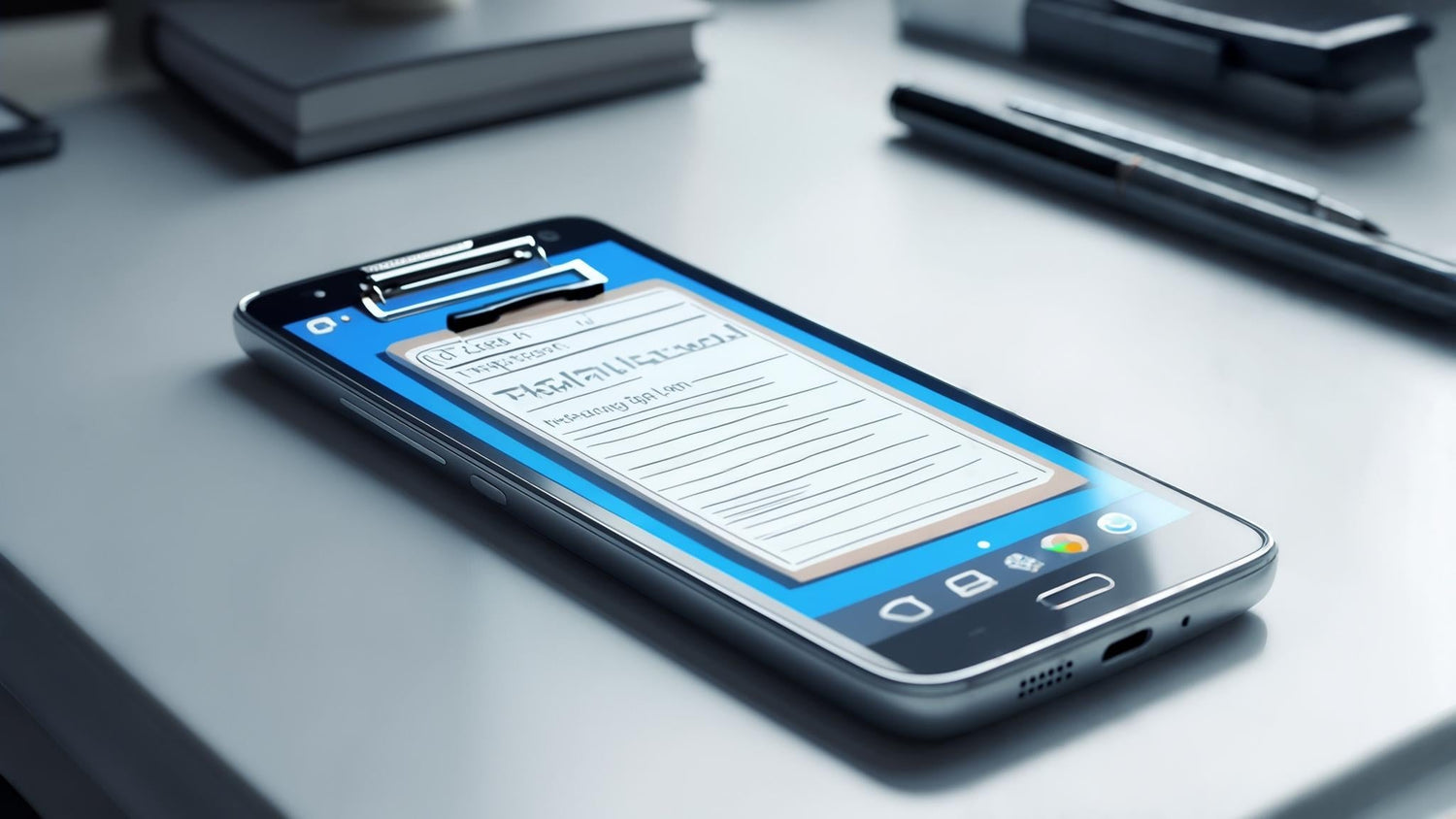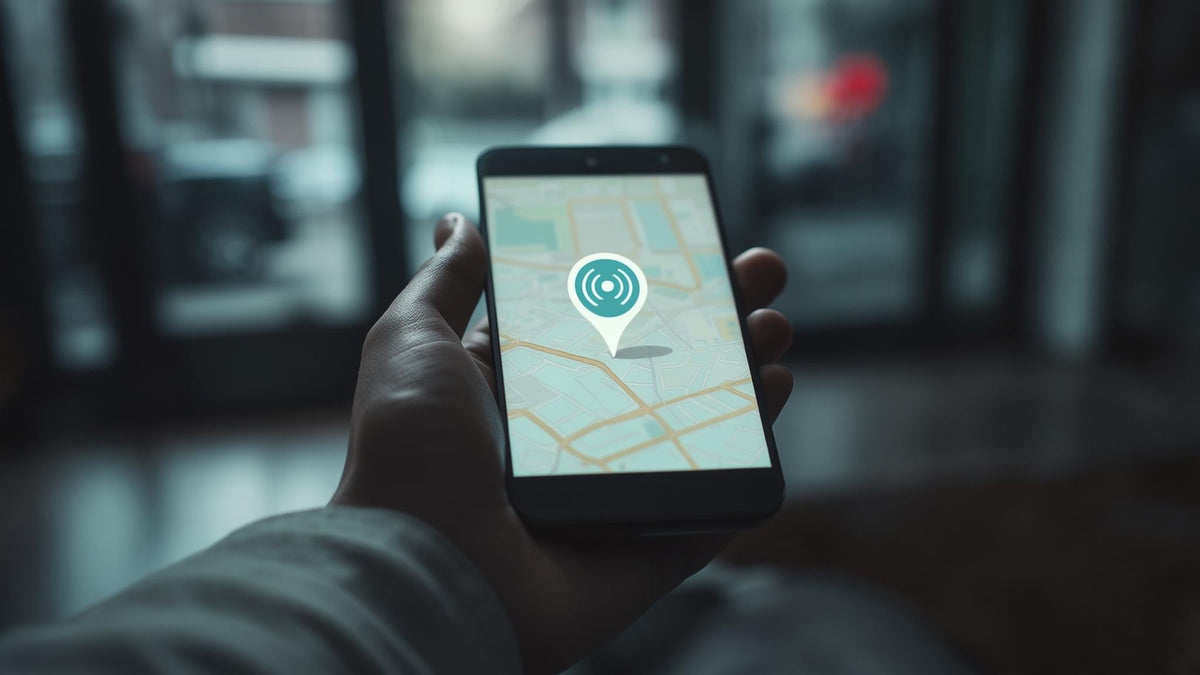Table of Contents
Understanding Your Android Clipboard's Hidden Capabilities
Finding Your Clipboard When It Seems to Disappear
Accessing Clipboard Features Across Different Android Devices
Advanced Clipboard Management That Actually Works
Troubleshooting Common Clipboard Frustrations
Final Thoughts
TL;DR
Your Android phone secretly stores multiple copied items, not just the last one
Every phone maker hides clipboard features in different spots - we'll show you where to look
Your phone automatically deletes sensitive stuff after an hour to keep you safe
Third-party apps can turn your clipboard into a productivity powerhouse
Most clipboard problems? Usually just your keyboard acting up
Know the backup tricks when your normal clipboard disappears
Understanding Your Android Clipboard's Hidden Capabilities
Ever copied something on your phone, then copied something else, and wished you could get back to the first thing? Turns out, you probably can - your Android phone has been hiding this feature from you.
I used to think my phone's clipboard was just a one-and-done deal - copy something new, lose what I had before. Boy, was I wrong. Your Android phone has been quietly storing multiple things you've copied, just waiting for you to discover this hidden superpower.
Most people assume their phone only remembers the last thing they copied. Reality check: your device keeps a whole queue of recent copies - text, images, links, whatever. It works seamlessly between apps, and there are even built-in security features protecting your private stuff without you knowing it.
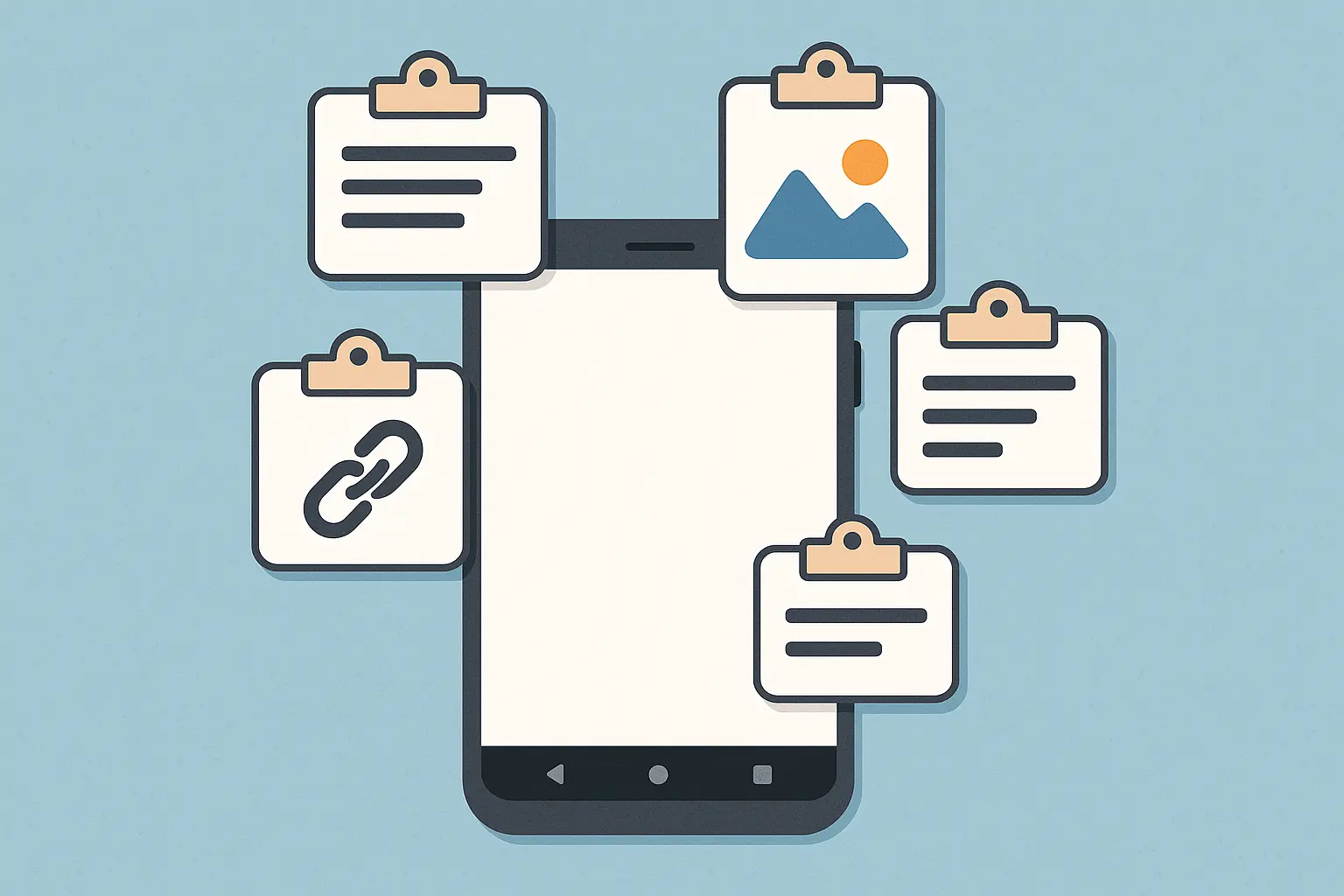
Here's something that blew my mind: according to Android forums, "Some phones will save only one item to clipboard, which is overwritten and lost if a second item is saved. Other phones will save up to ten items" - Android Central Forums. That's a huge difference depending on what phone you have.
Your Phone is Secretly Hoarding Your Copies
This multi-item storage thing is a total game-changer once you know about it. Your phone keeps a history of recent copies for up to an hour - text, images, links, whatever you throw at it.
I stumbled onto this by accident when I desperately needed something I'd copied three items ago. Turns out my phone still had it, just chilling in my keyboard, waiting for me to find it.
What Really Happens When You Copy and Paste
Understanding what's actually going on behind the scenes helps when things go sideways. It's way more complex than just highlighting and copying - your phone is doing some serious work to make this smooth for you.
When you long-press something, your phone doesn't just highlight text. It's analyzing what you selected, figuring out what type of content it is, and preparing multiple ways to paste it. Here's the real process:
Long-press triggers your phone's content detective mode
Those selection handles appear with smart word-snapping
The menu changes based on whether it's text, images, or links
Copy creates secure temporary storage
Paste gives you the right format for whatever app you're using
Think about copying a restaurant address from Yelp. Your phone recognizes it as location data and stores the text while also getting it ready for Maps, texting, or contact forms - each formatted perfectly for that specific app.
Multiple Items Hanging Out in Your Clipboard Right Now
Your phone typically holds 5-20 copied items depending on who made it and how much memory you have. Items disappear after about an hour for security reasons, but you can grab any of these stored items through your keyboard.
Most Android users never figure out they can paste something from three copies ago. Your phone does this automatically - it's like having a productivity boost you never knew existed.
Phone Brand |
How Many Items |
Where to Find It |
When It Disappears |
|---|---|---|---|
Samsung Galaxy |
Up to 20 items |
Samsung Keyboard toolbar |
1 hour |
Google Pixel |
Up to 10 items |
Gboard clipboard icon |
1 hour |
Basic Android |
Up to 5 items |
Long-press text field |
1 hour |
OnePlus |
Up to 15 items |
OxygenOS keyboard |
1 hour |
Third-party apps |
100+ items |
App interface |
You decide |
Your Phone's Secret Security Team
Android has multiple layers protecting your clipboard - automatic clearing, recognizing sensitive data, and notifications when apps peek at your copies. This stuff protects your privacy without you having to do anything, though knowing about it helps you make smarter choices about what to copy.
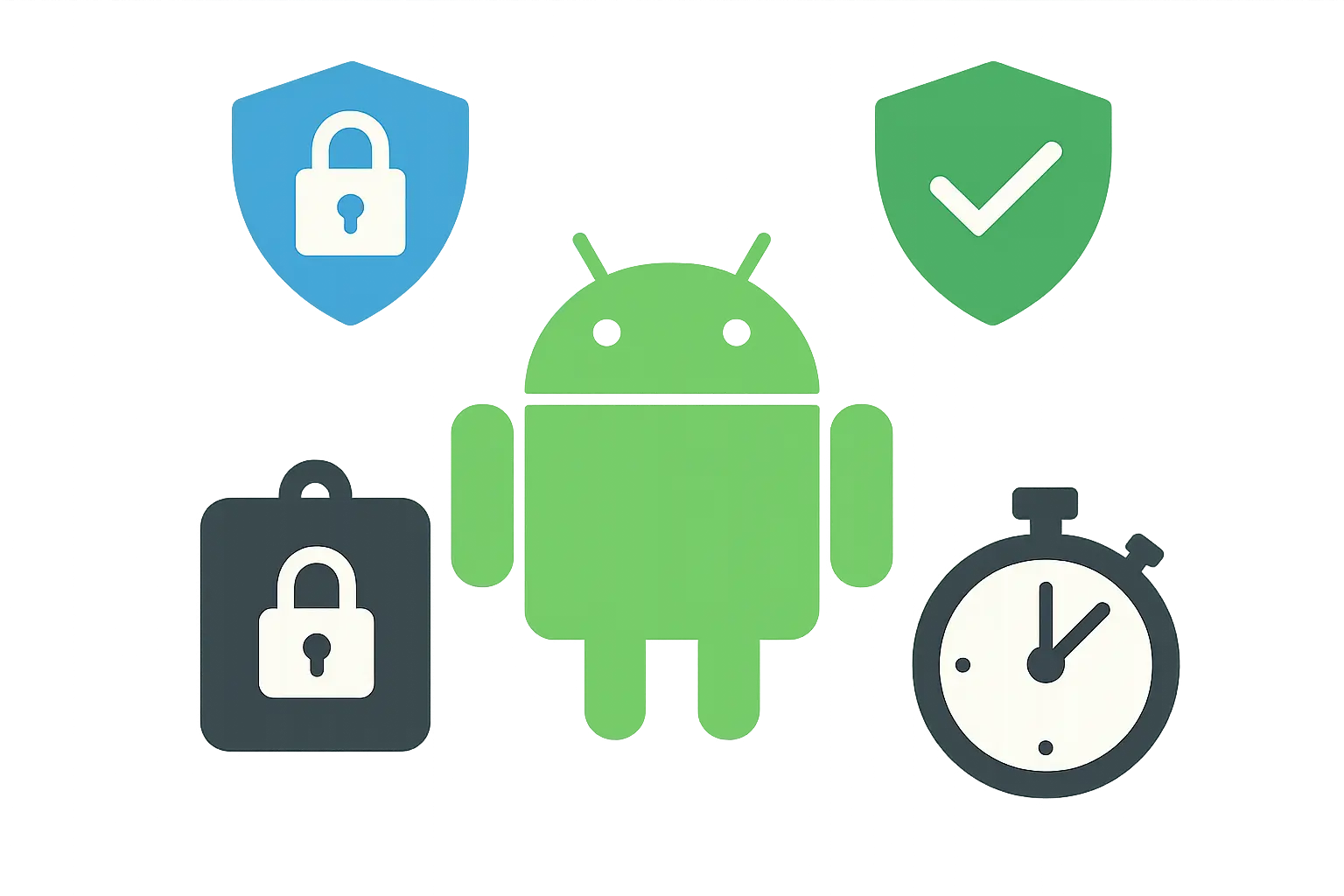
Why Your Stuff Disappears (And Why That's Good)
The automatic clearing isn't your phone being broken - it's protecting you. Android recognizes patterns in what you copy and applies different rules. Passwords might vanish in minutes, while regular text sticks around longer.
Research shows that "after about one hour, clipboard entries delete themselves" - Android Authority, which is actually a crucial security feature preventing unauthorized access to your sensitive copied information.
Apps Can't Secretly Steal Your Copies Anymore
Recent Android versions tell you whenever apps access your clipboard, giving you transparency about which apps are reading your copied data. This helps you spot sketchy apps and make informed decisions.
Those clipboard access notifications aren't annoying pop-ups - they're your privacy shield. When apps peek at your clipboard, you'll see brief notifications showing exactly which app looked and when.
Finding Your Clipboard When It Seems to Disappear
Here's the frustrating truth: clipboard access is completely different across Android devices. Each manufacturer hides these features in their own special place, and it's not always obvious where to look when you switch phones or update your software.
The Great Clipboard Hide-and-Seek Game
Your clipboard features are always there - finding them is the challenge. They might be hiding behind keyboard toolbars, buried in settings menus, or accessible through gestures that change depending on who made your phone.
I've wasted embarrassing amounts of time hunting for clipboard access on new devices. The functionality exists, but each manufacturer has their own idea of where to put it.
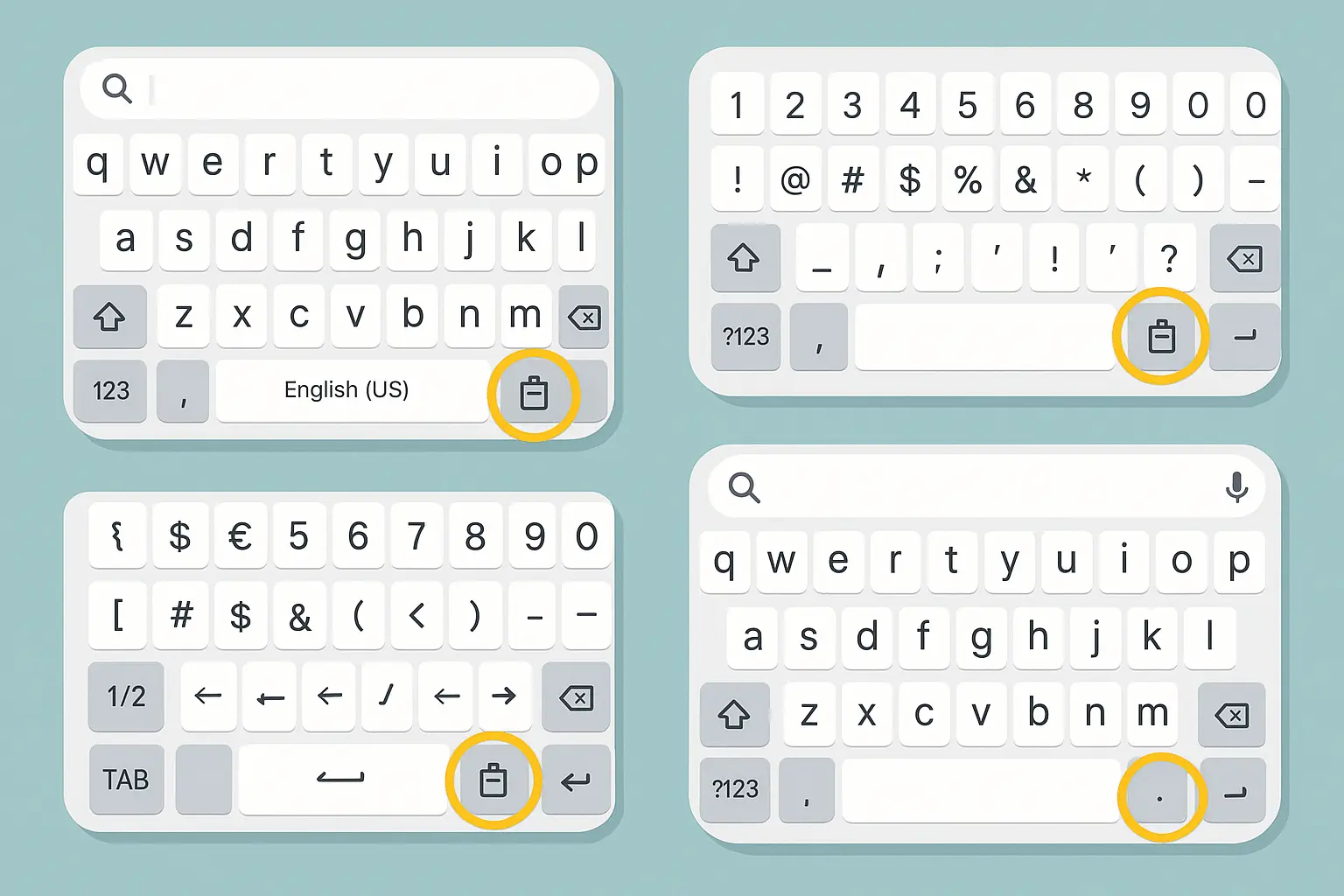
Hunting Down Those Sneaky Clipboard Icons
Clipboard indicators show up in all sorts of forms across different keyboards. You might see tiny clipboard symbols, plus signs, or three-dot menus that reveal clipboard options when tapped. Learning to spot these visual cues helps you find clipboard features quickly.
Your clipboard icon plays serious hide-and-seek. Gboard users find a small clipboard symbol in the toolbar above the letters. Samsung Keyboard puts it prominently in the top toolbar. SwiftKey hides it behind a plus (+) button that expands into more options.
Some keyboards use completely different visual languages:
Actual clipboard icons that look like clipboards
Plus symbols that expand into clipboard menus
Three-dot overflow menus with clipboard options
Long-press areas on space bars or comma keys
When Your Keyboard Goes Rogue
Sometimes your keyboard just doesn't show clipboard features. Here are backup methods that work when your primary access routes fail:
Open any text field and check your notification panel for clipboard notifications
Go to Settings > Privacy > Clipboard for system-level access
Long-press the space bar or comma key (depends on your keyboard)
Check if your phone launcher has clipboard widgets
Search your app drawer for "Clipboard" - some manufacturers include dedicated apps
Clipboard Access Troubleshooting Checklist:
Check keyboard toolbar for clipboard icon
Try long-pressing space bar or comma key
Look for plus (+) or three-dot menu buttons
Go to Settings > Privacy > Clipboard
Check notification panel after copying something
Search app drawer for "Clipboard"
Try switching keyboards temporarily
Restart keyboard app if it's being weird
Phone-Specific Treasure Maps
Different Android manufacturers do their own thing with clipboard interfaces, integrating them with their custom keyboards and productivity suites. Understanding these manufacturer-specific approaches helps you find and use clipboard features no matter which Android device you're using.
Samsung's Clipboard Kingdom
Samsung devices offer enhanced clipboard features through One UI, providing extended storage and organization options. Samsung's setup can store up to 20 recent items and includes pinning functionality to prevent important items from automatic deletion.
Samsung users get clipboard superpowers through One UI. Access your clipboard through the Samsung Keyboard's toolbar, where you'll find up to 20 recent items. Pin important content to prevent automatic deletion, and use Edge Panel integration for quick access from any screen.
Samsung's clipboard also connects with their productivity ecosystem. Items copied on your Galaxy phone can sync with Samsung tablets and other connected devices when enabled in Samsung account settings.
Microsoft is developing enhanced clipboard sync capabilities, with "Windows Latest spotted the toggle 'Access PC's clipboard' in a preview build" - Windows Latest, which will allow seamless clipboard sharing between Windows PCs and Android devices through Gboard and other keyboards.
Google's Keep-It-Simple Approach
Stock Android provides streamlined clipboard management through the keyboard interface and system settings, focusing on simplicity and security over tons of features. Google's approach prioritizes privacy and cross-app compatibility while keeping things easy to use.
Pure Android keeps clipboard access simple but effective. Gboard integration provides the primary access point, with system settings offering privacy controls and permission management. Google emphasizes security and universal compatibility over feature overload.
Accessing Clipboard Features Across Different Android Devices
Multiple ways exist to view and manage your clipboard content, with access methods varying based on who made your device, which Android version you're running, and what keyboard you're using. Mastering these different approaches ensures you can maintain clipboard productivity regardless of which Android device you're using.
Your Keyboard is the Master Key
Virtual keyboards serve as the main gateway for clipboard functionality across most Android devices. This method works consistently across different apps and gives you immediate access to clipboard history without leaving your current workflow.
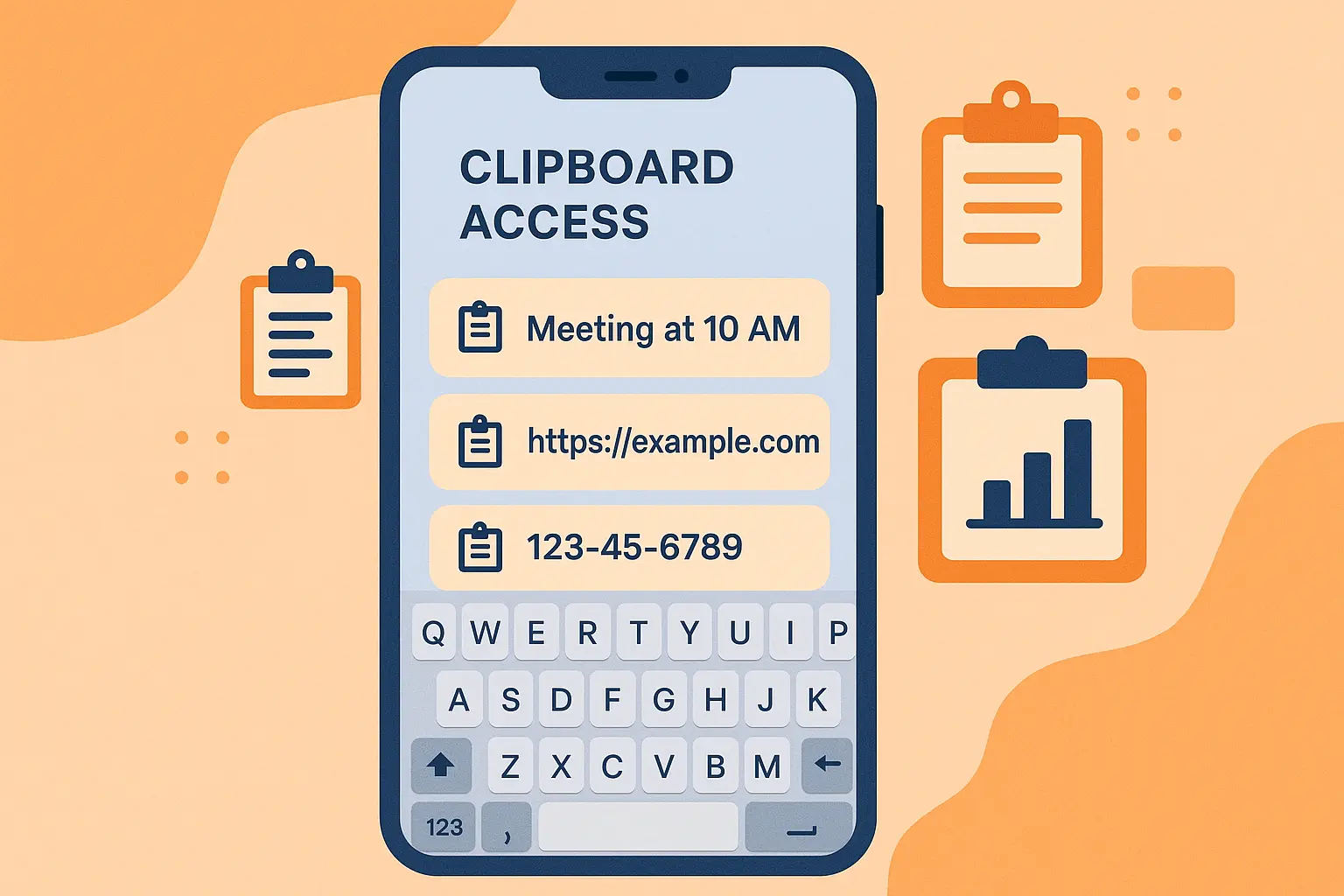
Your Keyboard is Clipboard Central Command
On-screen keyboards integrate clipboard management directly into their interfaces, typically showing clipboard options in toolbars or expandable menus. This integration allows seamless clipboard access while typing, making it the most efficient method for regular use.
Every time you bring up your keyboard, you're looking at your clipboard's front door. Most keyboards show clipboard access in their toolbar - that row of icons above the letter keys. Tap the clipboard icon and your recent copies appear instantly.
Can't find the clipboard icon? Try these keyboard-specific methods:
Gboard: Look for clipboard symbol in top toolbar
SwiftKey: Tap the plus (+) button, then select clipboard
Samsung Keyboard: Clipboard icon appears prominently in toolbar
Stock Android keyboards: Long-press comma or space bar
Recent developments show that "everything syncs to the system clipboard rather than Microsoft's Swift Key in particular, meaning it works with Gboard and other keyboards such as Samsung Keyboard" - 9to5Google, demonstrating how clipboard functionality is becoming more universal across different keyboard applications.
When Keyboards Let You Down
Sometimes you need backup access methods when keyboard interfaces don't provide clipboard functionality or when keyboard apps malfunction. These backup approaches include system-level access through settings menus and notification-based clipboard management.
Keyboard acting weird? System settings provide reliable backup access. Go to Settings > Privacy (or Security) > Clipboard to view permissions and access clipboard management tools. Some Android versions include clipboard history directly in system settings.
If you're using a Samsung Galaxy device and the Samsung Keyboard stops responding, you can still access your clipboard by opening any messaging app, tapping the text field, then looking for the small clipboard preview that appears in the bottom-left corner of your screen (on Android 13+). This system-level access works independently of keyboard apps.
Manufacturer Customizations That Change Everything
Android device manufacturers often create custom clipboard interfaces that extend beyond standard Android functionality. These customizations can include enhanced storage capacity, organization features, and integration with manufacturer-specific productivity tools.
OnePlus, LG, and Other Custom Setups
Various Android manufacturers create unique clipboard experiences that integrate with their custom user interfaces and productivity features. These implementations often provide additional functionality while maintaining compatibility with standard Android clipboard operations.
OnePlus devices integrate clipboard access through OxygenOS's custom keyboard and quick settings panel. LG phones (while still supported) offered clipboard widgets and integration with their productivity suite. Each manufacturer adds their own twist.
Xiaomi's MIUI provides clipboard access through their custom keyboard and includes cloud synchronization features. Huawei devices (with Google services) integrate clipboard management with their productivity apps and cross-device sharing capabilities.
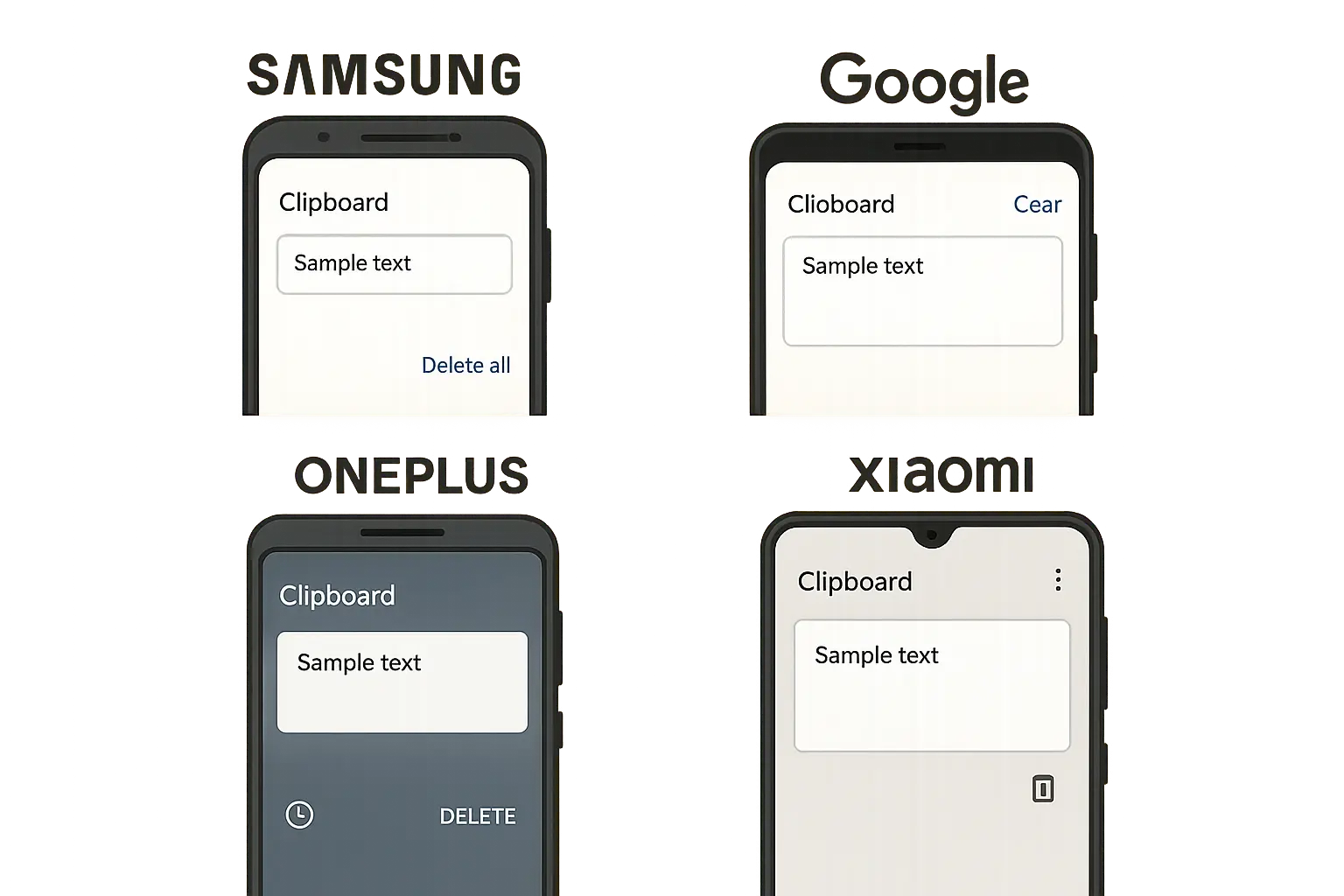
Advanced Clipboard Management That Actually Works
Third-party clipboard management apps provide functionality that goes way beyond what your phone comes with, offering features like extended history storage, search capabilities, and cross-device synchronization. These tools transform clipboard usage from basic copy-paste into comprehensive productivity systems.
Third-Party Apps That Transform Your Clipboard Experience
Dedicated clipboard management apps offer sophisticated features including extended history storage, content organization, and advanced search functionality. These apps address limitations in stock Android clipboard implementations while providing enhanced security and productivity features.
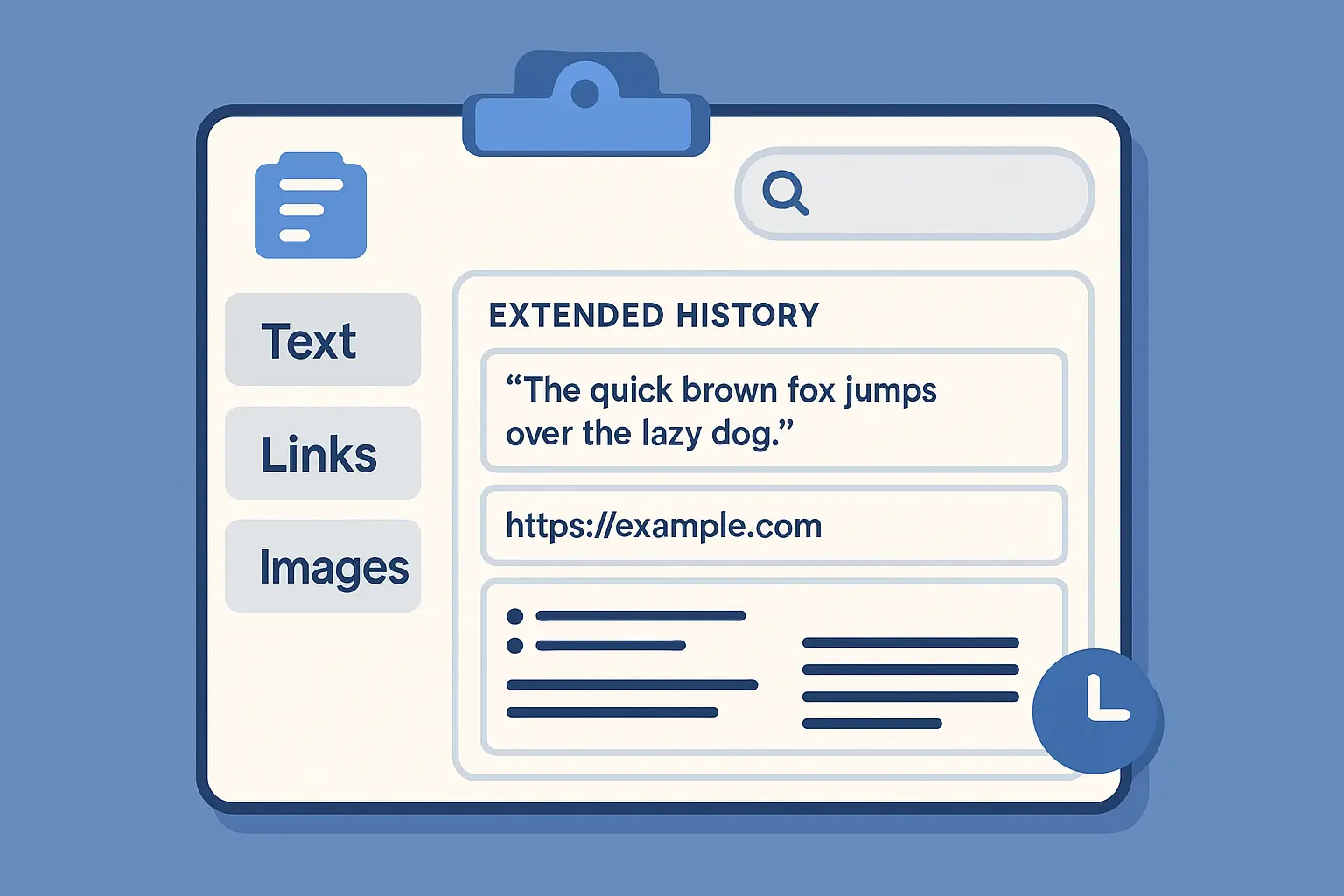
Apps Worth Installing for Serious Clipboard Users
Several clipboard management apps stand out for their reliability, feature sets, and user experience. These apps provide extended clipboard history, organizational tools, and synchronization capabilities that transform how you interact with copied content.
Clipper, Clipboard Manager, and SwiftKey represent the top tier of clipboard management apps. Each offers unique advantages:
Clipper excels at extended history (storing 100+ items) with robust search functionality. You can search through weeks of clipboard history using keywords, making it perfect for research-heavy workflows.
Clipboard Manager focuses on organization with categories, tags, and favorites systems. Create custom categories for different projects or content types, then quickly access relevant items.
SwiftKey (now Microsoft SwiftKey) integrates clipboard management with predictive typing, creating seamless workflows between clipboard access and text input.
Advanced clipboard managers can store significantly more content than native implementations, with some applications capable of maintaining "100+ items" - Bloodstock UK Affiliates, compared to the typical 5-20 items supported by manufacturer implementations.
Setting Up Your Clipboard Powerhouse
Proper configuration of third-party clipboard managers requires attention to permissions, security settings, and synchronization options. These setup considerations ensure optimal functionality while maintaining privacy and security standards appropriate for your usage patterns.
Installing a clipboard manager requires careful permission management. These apps need accessibility services to monitor clipboard activity and notification access to provide quick
clipboard access. The setup process guides you through enabling necessary permissions.
Configuration priorities:
Set history limits based on your storage preferences and privacy comfort level
Configure auto-delete settings to balance convenience with security
Enable cloud sync only if you understand the privacy implications
Set up quick access methods (widgets, notification shortcuts)
Test functionality across your most-used apps
Third-Party Clipboard Manager Setup:
Download reputable clipboard manager from Play Store
Grant necessary permissions (Accessibility, Notifications)
Set maximum history items (recommended: 50-100)
Configure auto-delete timeframe (1-24 hours)
Enable/disable cloud synchronization based on privacy needs
Set up quick access widget or notification shortcut
Test clipboard access across different apps
Configure security settings for sensitive content
Set up backup and export options
Review and adjust privacy settings
Automation and Productivity Hacks
Advanced clipboard usage involves creating automated workflows and productivity shortcuts that streamline repetitive tasks. These techniques leverage clipboard functionality to reduce manual input and improve efficiency in common workflows.
Creating Clipboard Shortcuts for Repetitive Tasks
Clipboard automation can eliminate repetitive typing tasks by storing frequently used content in easily accessible formats. This approach works particularly well for email signatures, addresses, phone numbers, and other standardized text that you regularly need to input.
Store frequently used content in your clipboard manager's favorites or pinned items. Email signatures, addresses, phone numbers, and standard responses become instantly accessible without retyping.
Create clipboard templates for common scenarios:
Meeting invitation templates with standard language
Address formats for shipping and billing
Social media post templates with hashtags and mentions
Code snippets for developers
Standard email responses for customer service
Template Type |
Use Case |
Time Saved |
Best Apps |
|---|---|---|---|
Email Signatures |
Professional correspondence |
30 sec/email |
Clipper, Clipboard Manager |
Addresses |
Online shopping, forms |
45 sec/entry |
Samsung Clipboard, Gboard |
Phone Numbers |
Contact sharing, forms |
15 sec/entry |
Any clipboard manager |
Social Media Templates |
Content creation |
2 min/post |
Advanced clipboard apps |
Code Snippets |
Development work |
5 min/snippet |
Developer-focused apps |
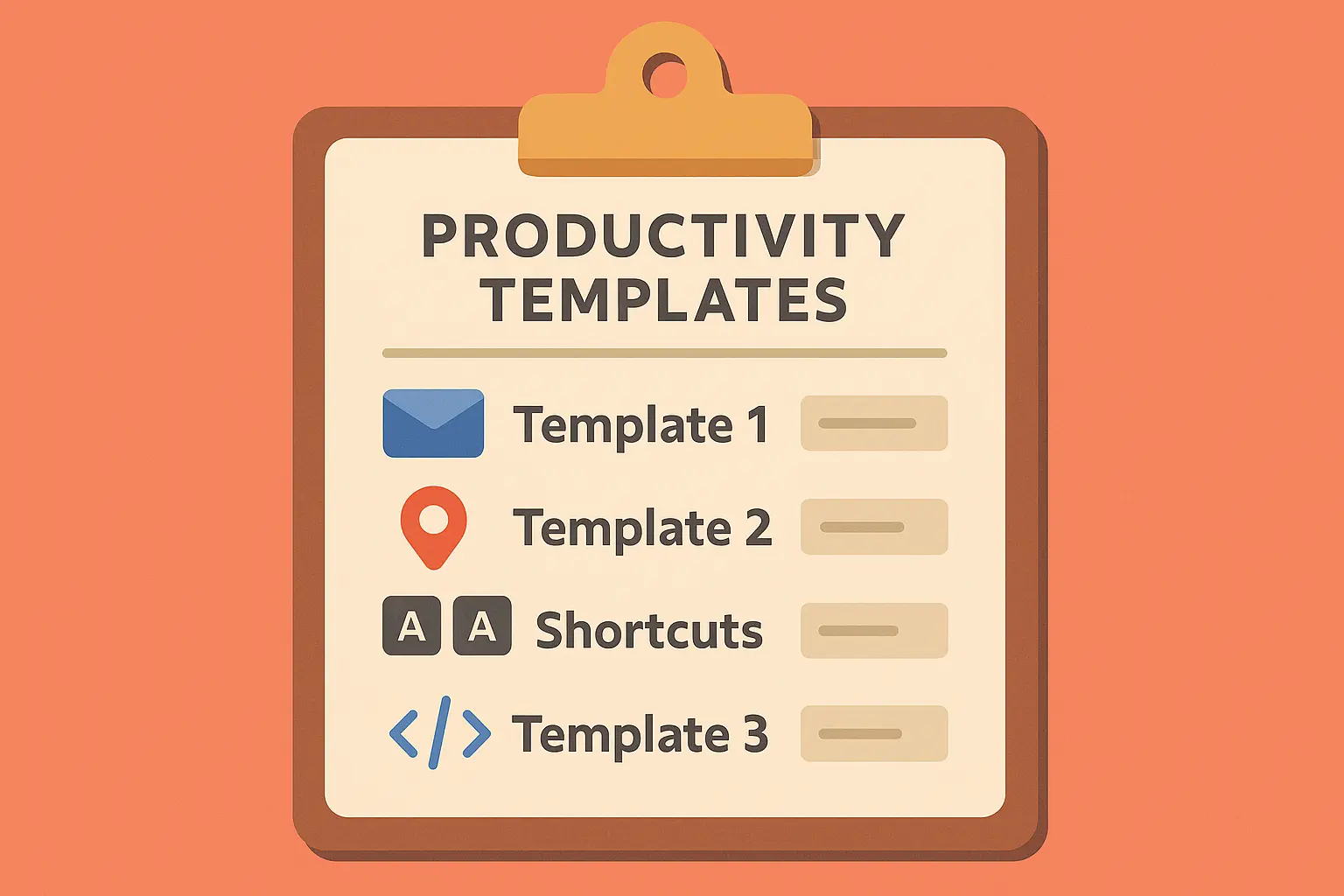
Troubleshooting Common Clipboard Frustrations
Clipboard problems usually come down to keyboard app conflicts, your phone running low on memory, or certain apps blocking clipboard access. Understanding these common issues helps you fix things systematically without needing to be a tech expert or restart your entire phone.
When Copy-Paste Dies Completely
Complete clipboard failure usually means there's a system-level problem that needs systematic troubleshooting. These failures can happen when keyboard apps malfunction, your phone's memory gets overwhelmed, or multiple clipboard apps start fighting each other.
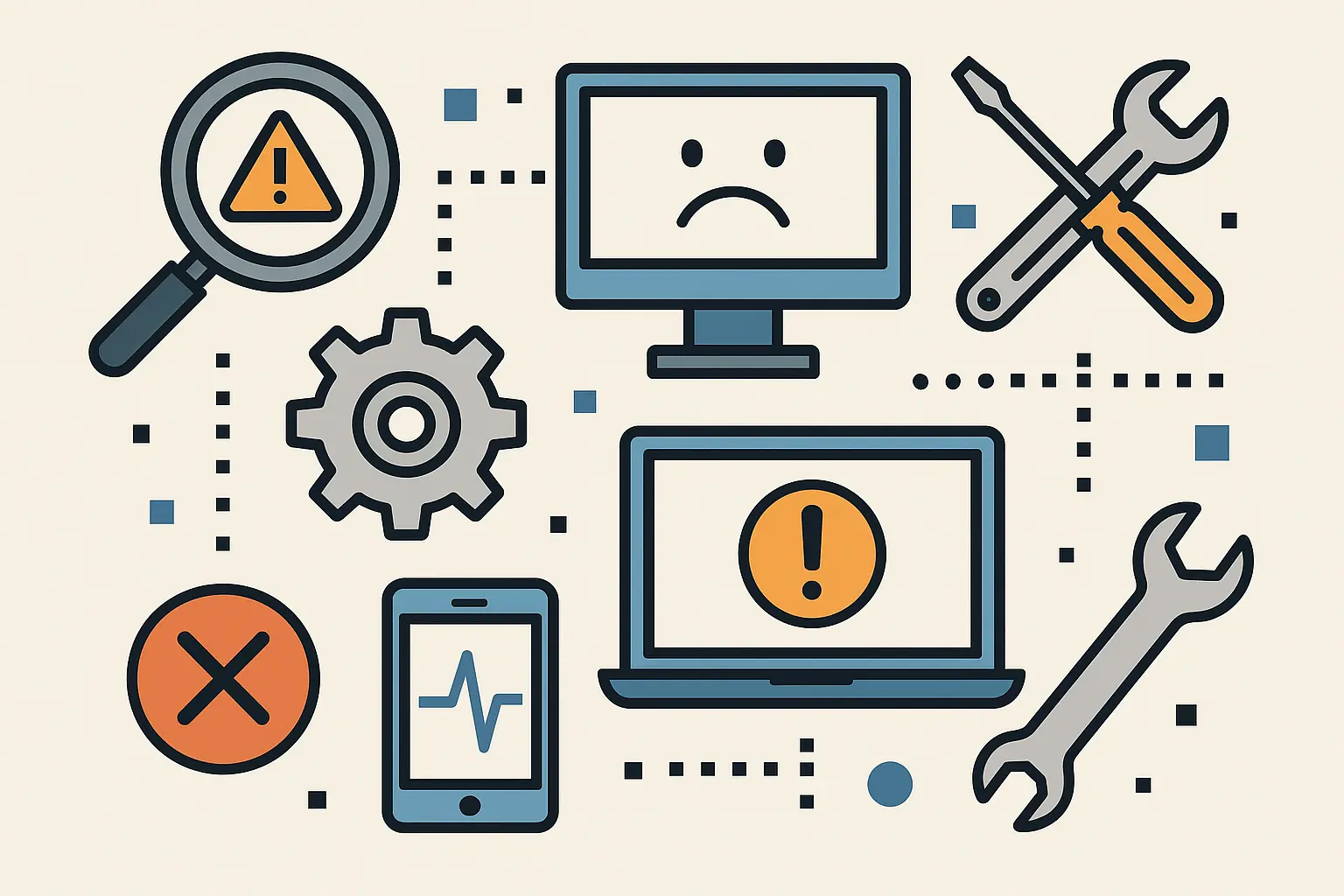
The Nuclear Option: Step-by-Step Troubleshooting
When your clipboard completely stops working, a structured approach can identify and fix the problem. This involves testing different access methods, clearing app data, and systematically eliminating potential conflict sources.
Clipboard completely dead? Start with the basics before panicking:
Test clipboard in different apps - some apps block clipboard access
Restart your keyboard app by force-stopping it in Settings > Apps
Clear keyboard app cache and data (you'll lose custom settings)
Switch to a different keyboard temporarily to isolate the problem
Restart your device to refresh system clipboard services
Still broken? Check for app conflicts. Multiple clipboard managers can mess with each other. Disable or uninstall third-party clipboard apps temporarily to test your system clipboard.
Here's a real example: someone installs three different clipboard managers simultaneously, causing conflicts where copied text appears in one app but not others. The solution? Uninstall all third-party clipboard apps, restart the device, then reinstall only one preferred clipboard manager and test functionality before adding others.
Memory and Storage Issues
Clipboard problems can happen when your phone doesn't have enough memory or storage space for proper clipboard operation. These issues typically show up as items not saving to clipboard history or paste operations failing unexpectedly.
Low storage affects clipboard functionality more than most people realize. Android needs available memory to maintain clipboard history and process copy-paste operations. When storage runs low, clipboard features may fail silently.
Free up space by:
Clearing app caches (Settings > Storage > Cached data)
Removing unused apps and files
Moving photos and videos to cloud storage
Clearing clipboard history in third-party managers
App-Specific Clipboard Restrictions
Certain apps implement their own clipboard restrictions or use proprietary clipboard systems that don't play nice with standard Android clipboard functionality. Understanding these limitations helps you work around app-specific clipboard issues.
Banking Apps and Security Restrictions
Financial and security-focused apps often restrict clipboard access to prevent sensitive information from being copied or pasted. These restrictions protect your data but can create workflow interruptions that require alternative approaches.
Banking apps frequently block clipboard access for security reasons. You can't copy account numbers or paste passwords in many financial apps. This isn't a bug - it's intentional security.
Work around these restrictions by:
Using password managers with direct app integration
Manually typing sensitive information instead of copying
Taking screenshots for reference (then deleting them immediately)
Using the app's built-in sharing features instead of clipboard
Social Media and Content Apps
Social media platforms and content apps may implement custom clipboard behaviors that interfere with standard copy-paste operations. These implementations often relate to content protection, analytics tracking, or platform-specific sharing features.
Instagram, TikTok, and other social apps sometimes mess with clipboard functionality. They may monitor clipboard content for analytics or implement custom sharing systems that bypass standard clipboard operations.
These apps might:
Monitor clipboard content when opened (you'll see notifications)
Prevent copying of certain content types
Use custom sharing interfaces instead of standard copy-paste
Clear clipboard content when switching between apps
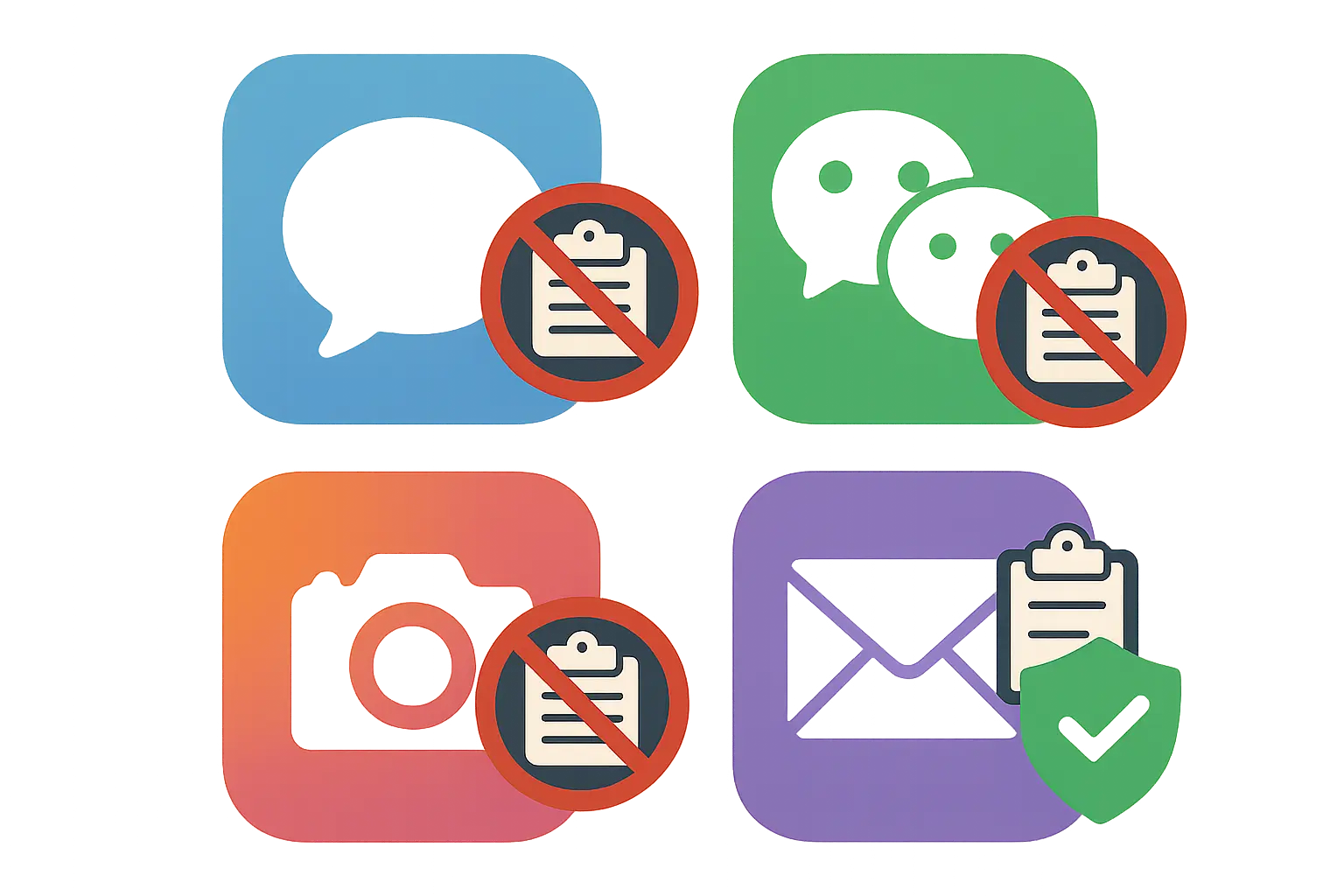
Final Thoughts
Your Android clipboard is way more sophisticated than most people realize, but accessing its full potential requires understanding the quirks and variations across different devices and manufacturers. The frustration of "losing" clipboard items or not finding clipboard access isn't because Android sucks - it's usually just a matter of knowing where to look and how different implementations work.
The biggest clipboard breakthrough comes from installing a dedicated clipboard manager and learning your specific device's access methods. Once you understand whether your phone uses Samsung's approach, Google's minimalist system, or another manufacturer's custom implementation, clipboard productivity becomes second nature.
Those security features that sometimes seem annoying - automatic content clearing and app access notifications - are actually protecting your sensitive information. Embracing these privacy measures while learning to work with them creates a more secure and efficient clipboard experience.
Your clipboard is only as reliable as your understanding of how it works on your specific device. Take the time to explore your phone's particular implementation, install a good third-party manager if needed, and learn the backup access methods. Once you master these basics, you'll wonder how you ever lived without knowing your phone's hidden clipboard superpowers.







